Did you know that vegetable spaghetti is a low carb noodle dish that serves as a healthy pasta alternative? In fact, the popularity of this gluten-free vegetable noodle option is on the rise, as people discover the deliciousness and nutritiousness of veggie spaghetti. Whether you opt for homemade veggie pasta or utilize pre-made vegetable noodles, the possibilities for customization and flavor combinations are endless, making it a perfect choice for those seeking a vegetarian pasta recipe or a plant-based spaghetti option. Say goodbye to guilt and hello to a satisfying, nutrient-packed meal!
Key Takeaways:
- Vegetable spaghetti is a low carb and gluten-free alternative to traditional pasta.
- It offers endless possibilities for customization and flavor combinations.
- Whether you opt for homemade veggie pasta or pre-made vegetable noodles, you can enjoy a guilt-free and nutritious meal.
- Vegetable spaghetti is a great choice for vegetarians and those looking for plant-based options.
- Explore new recipes and create your own twists on classic pasta dishes with veggie spaghetti.
Benefits of Vegetarian Pasta
Vegetarian pasta dishes offer numerous benefits for your health. By incorporating vegetables into your pasta, you are adding essential nutrients and fiber to your meal. Choosing whole wheat pasta or pasta made from legumes can increase the protein content and make the dish even healthier. These options are a great choice for those looking to reduce their meat consumption or follow a vegetarian lifestyle.
The Nutritional Power of Vegetarian Pasta
Vegetarian pasta is not only delicious but also a wholesome and nutritious choice. By substituting traditional pasta with whole wheat pasta or legume-based pasta, you can enjoy a meal rich in fiber and protein. Whole wheat pasta is made from whole grains and retains the bran, germ, and endosperm, making it a healthier alternative to refined pasta. Legume-based pasta, such as chickpea pasta or lentil pasta, is packed with plant-based protein, making it an ideal choice for vegetarians seeking to increase their protein intake.
Fiber-Rich and Heart-Healthy
One of the primary benefits of vegetarian pasta is its high fiber content. Vegetables used as toppings or incorporated into the pasta itself add an extra dose of fiber, aiding digestion and promoting a healthy gut. Fiber also helps regulate blood sugar levels and may reduce the risk of developing heart disease. Additionally, whole wheat pasta contains complex carbohydrates that are absorbed more slowly, providing sustained energy levels and preventing blood sugar spikes.
A Healthier Option
Choosing vegetarian pasta over traditional pasta can be a healthier option due to its lower calorie and fat content. By eliminating or reducing the amount of meat or heavy cream-based sauces in your pasta dish, you can reduce the overall calorie and fat intake. This makes vegetarian pasta a great choice for those looking to maintain or lose weight while still indulging in a satisfying and flavorful meal.
A Variety of Nutrients
Vegetarian pasta offers a wide range of essential nutrients, with each vegetable adding its own unique health benefits. For example, adding spinach to your pasta contributes iron, vitamin C, and antioxidants to support immune function and promote healthy blood circulation. Tomatoes, a common ingredient in pasta dishes, are rich in lycopene, a powerful antioxidant that may reduce the risk of chronic diseases.
Choosing the Right Pasta Shapes
The shape and texture of your pasta can greatly impact the overall dish. Different shapes are better suited for specific sauces or toppings, allowing you to create the perfect combination of flavors and textures.
When it comes to spiral-shaped pasta, like fusilli and rotini, their grooves are ideal for holding onto chunky vegetable sauces. The spirals help to catch the sauce, ensuring that each bite is filled with delicious flavors.
On the other hand, long ribbon-shaped pasta, such as fettuccine, is better suited for lighter sauces. These types of pasta are perfect for oil-based dressings or sauces with ingredients like spinach and zucchini. The broad surface area of the ribbons allows the sauce to cling to the pasta, creating a harmonious blend of flavors.
Choosing the right pasta shape is essential for achieving the desired taste and presentation of your dish. Consider the specific sauce or toppings you will be using and select a pasta shape that complements them perfectly.
Here are some examples of pasta shapes and their best pairings:
| Pasta Shape | Ideal Pairings |
|---|---|
| Fusilli | Chunky vegetable sauces, pesto |
| Rotini | Tomato-based sauces, meat sauces |
| Fettuccine | Butter or oil-based sauces, creamy Alfredo sauce |
| Long Ribbons | Light tomato-based sauces, vegetable medleys |
“The shape and size of pasta play a pivotal role in the overall dining experience, affecting how the sauce clings to the pasta and the texture in every bite.” – Chef Anna Rossi
Experiment with different pasta shapes to discover your favorites and enjoy the delightful world of pasta possibilities. Happy cooking!
Essential Ingredients for Veggie Pasta
When it comes to making veggie pasta, the choice of ingredients can make all the difference in flavor and texture. As an avid pasta enthusiast, I’ve discovered some essential ingredients that elevate my veggie pasta dishes to new heights. Let me introduce you to these must-have ingredients that will take your pasta game to the next level.
Olive Oil
First things first, let’s talk about olive oil. This golden elixir not only adds richness to your pasta but also brings a delightful fruity and nutty flavor. A drizzle of olive oil can work wonders in enhancing the taste of your dish.
Onions and Garlic
No pasta dish is complete without the aromatic combination of onions and garlic. These flavor powerhouses add depth and complexity to your veggie pasta. Sautéed onions and garlic create a savory base that forms the backbone of many pasta recipes.
Tomatoes
Tomatoes are a staple in Italian cooking, and they lend a beautiful sweetness and tanginess to your veggie pasta. Whether you prefer fresh tomatoes, tomato sauce, or canned tomatoes, incorporating this ingredient will give your pasta a vibrant and refreshing taste.
Mushrooms
Mushrooms are a fantastic addition to veggie pasta, providing a rich and earthy flavor. You can sauté them to create a meaty texture or roast them for a deeper, umami taste. Experiment with different varieties like cremini, shiitake, or portobello to discover your favorite.
Kale and Yellow Squash
For added nutrition and a pop of color, consider incorporating kale and yellow squash into your veggie pasta. Kale brings a slightly bitter taste and a beautiful deep green color, while yellow squash adds sweetness and a satisfying crunch. Together, they provide a well-rounded balance of flavors and textures.
Vegan Cheese Alternatives
If you’re following a vegan lifestyle, there’s no need to miss out on the creamy indulgence that cheese brings to pasta. Thankfully, there is a wide range of vegan cheese alternatives available that melt and ooze just like the real thing. Try experimenting with vegan mozzarella, cheddar, or Parmesan to find your favorite dairy-free substitute.
Flavoring Herbs and Spices
Lastly, don’t forget to add an assortment of flavoring herbs and spices to elevate your veggie pasta. Basil, parsley, oregano, and red pepper flakes are just a few examples of herbs and spices that can add a burst of freshness, aroma, and heat to your dish. Feel free to customize and experiment with different combinations to suit your taste buds.
With these essential ingredients in your arsenal, you can create a wide variety of delicious and satisfying veggie pasta dishes. Let your creativity run wild as you mix and match flavors, and don’t be afraid to try new combinations. Your taste buds will thank you!
Popular Veggie Pasta Recipes
When it comes to veggie pasta, the options are endless and the flavors are abundant. Whether you’re a fan of classic Italian dishes or looking for creative twists, there’s a veggie pasta recipe out there to satisfy your cravings. Here are some popular veggie pasta recipes that you should try:
Classic Pasta Primavera
If you love a burst of color and fresh flavors, classic pasta primavera is a must-try. This dish features a medley of sautéed vegetables like bell peppers, broccoli, carrots, and cherry tomatoes, tossed with your choice of pasta. The light and vibrant sauce perfectly complements the vegetables, making it a wholesome and delightful meal. It’s a great way to pack in lots of nutrients with every bite.
Mushroom Stroganoff
For a vegetarian take on a comforting classic, mushroom stroganoff is a winner. This recipe replaces the beef with meaty mushrooms, creating a rich and savory dish that’s full of umami flavor. The creamy sauce, made with sour cream or a vegan alternative, coats the pasta for a satisfying and indulgent experience. Serve it over egg noodles or your favorite pasta shape for a hearty meal that will leave you wanting more.
Vegan Fettuccine Alfredo
Indulge in the creamy goodness of fettuccine alfredo without any dairy. Vegan fettuccine alfredo swaps the traditional ingredients for a luscious sauce made with cashews, nutritional yeast, garlic, and lemon juice. The result is a velvety smooth sauce that clings beautifully to fettuccine or any pasta of your choice. With this recipe, you can enjoy a guilt-free, plant-based version of a beloved Italian classic.
Baked Pasta Variations
If you’re craving a comforting and cheesy dish, baked pasta variations are a fantastic choice. Think ziti smothered in marinara sauce and topped with layers of roasted eggplant, melty vegan cheese, and fresh basil. Or, try pasta alla Norma, a dish that features penne pasta, roasted eggplant, and a flavorful marinara sauce, all baked together for a wonderful depth of flavors. These hearty, oven-baked pasta dishes are perfect for a cozy night in.
Refreshing Pasta Salads
Dress your pasta in refreshing flavors with a variety of pasta salads. These vibrant dishes are the perfect way to enjoy pasta during warmer months. Customize your salad with a wide array of raw veggies like cucumbers, bell peppers, cherry tomatoes, and tender greens. Drizzle with zesty dressings like lemon vinaigrette or balsamic glaze for a burst of flavor. Whether you prefer a light and tangy pasta salad or a more hearty option with beans and grilled veggies, there’s a refreshing pasta salad for everyone.
| Recipe | Description |
|---|---|
| Classic Pasta Primavera | A colorful mix of sautéed vegetables tossed with pasta and a light sauce. |
| Mushroom Stroganoff | A vegetarian twist on a comforting classic with meaty mushrooms. |
| Vegan Fettuccine Alfredo | A dairy-free version of the beloved creamy pasta with a cashew-based sauce. |
| Baked Pasta Variations | Hearty pasta dishes baked with layers of roasted eggplant, marinara sauce, and vegan cheese. |
| Refreshing Pasta Salads | Light and vibrant pasta salads with a variety of fresh vegetables and zesty dressings. |
These popular veggie pasta recipes are just the tip of the iceberg when it comes to the delicious world of plant-based pasta dishes. Get creative in the kitchen and experiment with different vegetables, flavors, and sauces to create your own unique spin on veggie pasta. Whether you’re a seasoned cook or a beginner, there’s a veggie pasta recipe out there that will make your taste buds dance.
Creative Veggie Pasta Ideas
Looking to add some creativity to your veggie pasta dishes? Here are some exciting ideas to try:
1. Stuffed Pasta Delights
Indulge in the deliciousness of stuffed pasta dishes like shells and manicotti. Fill them with a variety of flavorful vegetables, such as spinach, mushrooms, or roasted peppers.
2. Tomato-Based Pastas with a Veggie Twist
Transform classic tomato-based pastas like penne alla vodka by adding colorful bell peppers and onions. This veggie twist brings a burst of flavor and a vibrant visual appeal to your dish.
3. Veggie Pasta with Legumes
Boost the protein content of your veggie pasta by incorporating legumes. Try dishes like pasta e fagioli or a brothy pasta with chickpeas for a hearty and nutritious meal.
4. Innovative Cauliflower Bolognese
Satisfy your craving for meaty flavors with an innovative twist. Replace traditional meat with finely chopped cauliflower to create a bolognese sauce that offers a meat-like texture and a unique taste.
5. Summer-Inspired Pasta Dishes
Capture the essence of summer with refreshing pasta dishes. Enjoy the combination of squash and basil pasta or cherry tomato pasta, creating a burst of freshness and vibrant colors on your plate.
6. Kale-Powered Pasta
Boost the nutritional value of your pasta dish with kale. Prepare a kale pesto pasta that offers a nutritional powerhouse while adding a burst of flavor to your meal.
Explore these creative veggie pasta ideas and let your culinary imagination soar!
Customizing Your Veggie Pasta
Customizing your veggie pasta is all about personalization and experimenting with flavors that suit your taste preferences. Whether you’re a seasoned chef or a beginner in the kitchen, there are several tips and tricks that can help you create the perfect veggie pasta dish. From cooking tips to adding a personal twist, here’s how to make your veggie pasta truly delicious and unique.
Cooking Tips
Cooking your veggie pasta to perfection involves a few key techniques. Start by selecting the right base for your dish. Are you in the mood for a traditional tomato-based sauce or a creamy Alfredo? Your choice of base will set the stage for the flavors to come. When cooking the pasta itself, aim for al dente – a slightly firm and chewy texture that pairs well with sautéed vegetables. This will ensure that your dish has the ideal textures and flavors.
Making Pasta Sauces from Scratch
One of the joys of cooking veggie pasta is the ability to create your own pasta sauces from scratch. By making your own sauces, you have full control over the ingredients and flavors. Whether you prefer a simple tomato sauce with fresh basil or a creamy cashew-based sauce, there are endless possibilities to explore. Take the time to experiment with different herbs, spices, and unexpected ingredients to find your perfect combination.
Adding a Personal Twist
Adding a personal twist to your veggie pasta can elevate it from ordinary to extraordinary. Consider unexpected veggie combinations or spices that you love to create unique flavor profiles. For example, roasted broccoli can add a delicious crunch to a classic mac and cheese, while artichokes can bring a tangy and savory note to your pasta dish. Don’t be afraid to think outside the box and let your creativity shine.
Health and Nutritional Aspects
When customizing your veggie pasta, it’s important to consider the health and nutritional aspects as well. Keep an eye on the calorie count and portion sizes to maintain a balanced diet. Look for ways to incorporate protein into your dish, whether it’s through the addition of grilled shrimp, tofu, or plant-based meat alternatives. Sourcing high-quality ingredients, such as fresh vegetables and whole grain pasta, can also contribute to the nutritional value of your meal.
| Aspect | Tips |
|---|---|
| Calorie Count | Monitor portion sizes and opt for lighter sauces or dressings to keep the calorie count in check. |
| Protein Balance | Add protein to your veggie pasta by including ingredients like grilled chicken, tempeh, or legumes. |
| Sourcing and Shopping for Ingredients | Choose fresh and high-quality ingredients from local farmers markets or trusted grocery stores for optimal flavor and nutrition. |
By customizing your veggie pasta with cooking tips, homemade sauces, a personal twist, and attention to health and nutritional aspects, you can create a dish that is both delicious and tailored to your preferences. With endless possibilities, let your imagination run wild and enjoy the journey of discovering your own signature veggie pasta creation.
Cooking Tips for Home Cooks
When preparing veggie pasta at home, there are a few cooking tips that can greatly enhance your dish. Here are some useful tips to help you create delicious and flavorful veggie pasta dishes:
- Selecting the Right Base: Whether you’re making a traditional spaghetti sauce or a creamy sauce for vegan lasagna, choosing the right base is crucial for achieving the desired textures and flavors. Consider the type of sauce that will complement your vegetables and enhance the overall taste of your dish.
- Cooking Pasta Al Dente: Cooking your pasta al dente, which means “to the tooth” in Italian, is ideal for veggie pasta dishes. Al dente pasta is slightly chewy and pairs well with sautéed vegetables, allowing the flavors to shine. Be sure to cook your pasta just until it is tender but still has a slight firmness in the center.
- Seasoning Generously: Don’t be afraid to season your pasta dishes generously with salt and pepper at each stage of cooking. Seasoning throughout the cooking process helps to build layers of flavor and ensures that your pasta is well-seasoned and delicious.
- Experimenting with Herbs, Spices, and Unexpected Ingredients: Add a unique and exciting twist to your veggie pasta creations by experimenting with different herbs, spices, and unexpected ingredients. Try adding fresh basil, oregano, or red pepper flakes to give your dish a burst of flavor. Consider incorporating ingredients like roasted garlic, sun-dried tomatoes, or caramelized onions for added depth.
With these cooking tips, you’ll be able to create well-seasoned pasta dishes with the perfect textures and flavors. Don’t be afraid to get creative in the kitchen and let your taste buds guide you!
Expert Tip:
“To achieve a creamy pasta dish, try using plant-based alternatives such as cashew cream or coconut milk. These creamy bases add richness and depth of flavor to your veggie pasta creations.” – Chef Sarah Thompson
| Pasta Dish | Recommended Base |
|---|---|
| Creamy Pasta | Plant-based alternatives like cashew cream or coconut milk |
| Vegan Lasagna | A flavorful tomato sauce with layers of plant-based cheese or tofu |
Making Pasta Sauces from Scratch
Making pasta sauces from scratch using fresh ingredients can take your veggie pasta dishes to a whole new level. When creating a spaghetti sauce, start with a base of crushed tomatoes and add herbs like basil or oregano for a classic Italian flavor. If you prefer a creamy pasta sauce, blend soaked cashews with nutritional yeast to create a velvety, dairy-free alternative. Making pasta sauces from scratch allows you to customize the flavors and ingredients to your liking, and it’s surprisingly simple to do. To create a homemade pasta sauce, follow a few simple steps, such as:
- Sautéing garlic and onions in olive oil until fragrant and golden.
- Adding crushed tomatoes, fresh herbs, and seasonings such as salt and pepper.
- Simmering the sauce for about 20-30 minutes to allow the flavors to meld together.
- Tasting and adjusting the seasoning to your preference.
Making your own pasta sauce gives you the freedom to experiment with different ingredients and spices, allowing you to create unique and flavorful combinations. Whether you’re looking for a traditional marinara sauce or a rich and creamy Alfredo, the possibilities are endless. Plus, homemade sauces are often healthier and more cost-effective than store-bought options.
For a visual guide on making homemade pasta sauces, check out the step-by-step table below:
| Step | Description |
|---|---|
| Step 1 | Sauté garlic and onions in olive oil |
| Step 2 | Add crushed tomatoes, herbs, and seasonings |
| Step 3 | Simmer the sauce for 20-30 minutes |
| Step 4 | Taste and adjust seasoning |
By following these simple steps, you can create a delicious homemade pasta sauce that is bursting with flavors. Whether you want a classic marinara sauce, a hearty Bolognese, or a creamy Alfredo, the possibilities are endless. Experiment with different ingredients and spices to discover your favorite combinations. Give it a try and take your veggie pasta dishes to a whole new level!
Adding a Personal Twist
To make your veggie pasta dish even more unique and personal, don’t be afraid to add your own twist. Consider incorporating unexpected veggie combinations or spices that you love to add an extra layer of flavor to your dish. For example, you can elevate a classic mac and cheese by adding roasted broccoli or spicy jalapeños. If you prefer to add protein to your veggie pasta, options like grilled shrimp, chicken, sausage, or even meatballs can work well and add a satisfying element to your meal. The sky’s the limit when it comes to customizing your veggie pasta dish, so let your creativity soar.
Here’s an example of how you can create a unique and flavorful veggie pasta dish:
- Cook your favorite veggie noodles according to package instructions.
- In a separate pan, sauté onions and garlic in olive oil until golden brown.
- Add roasted broccoli and artichoke hearts to the pan and cook until tender.
- Season with spices like oregano, basil, and red pepper flakes for a burst of flavor.
- Toss the cooked veggie noodles with the sautéed vegetables and top with grated Parmesan cheese (or a vegan cheese alternative if preferred).
- For an added protein boost, consider adding grilled shrimp or sliced grilled chicken on top.
- Garnish with fresh herbs like parsley or basil for a final touch.
This personalized veggie pasta dish combines unexpected veggie combinations like roasted broccoli and artichokes with a variety of spices to create a unique and delicious flavor profile. Adding protein options such as grilled shrimp or chicken takes the dish to a whole new level of satisfaction. Don’t be afraid to experiment with different ingredient combinations and spices to create your own signature veggie pasta masterpiece.
Conclusion
After delving into the world of vegetable spaghetti, it’s clear that this nutritious alternative offers a wealth of benefits and endless possibilities. Whether you’re a vegetarian or simply looking to incorporate more veggies into your diet, vegetable spaghetti is a versatile option that can be customized to your heart’s content.
With its low carb and gluten-free nature, vegetable spaghetti provides a healthier twist to traditional pasta dishes. By using vegetables as the base, you can indulge in guilt-free meals that are packed with nutrients. The versatility of vegetable spaghetti allows you to experiment with various flavors and ingredients, ensuring that every dish is a unique and flavorful experience.
From classic pasta primavera to innovative cauliflower bolognese, there are countless flavor options to explore. Whether you prefer lighter sauces or creamy indulgences, vegetable spaghetti can accommodate your preferences. So grab your spiralizer or head to the store for pre-made veggie noodles, and let your culinary creativity take flight.
In conclusion, vegetable spaghetti is not only a healthy alternative, but it also opens up a world of culinary possibilities. Its versatility, health benefits, and flavor options make it a favorite among veggie enthusiasts and pasta lovers alike. So why not give vegetable spaghetti a try and enjoy the endless combinations and flavors it has to offer?

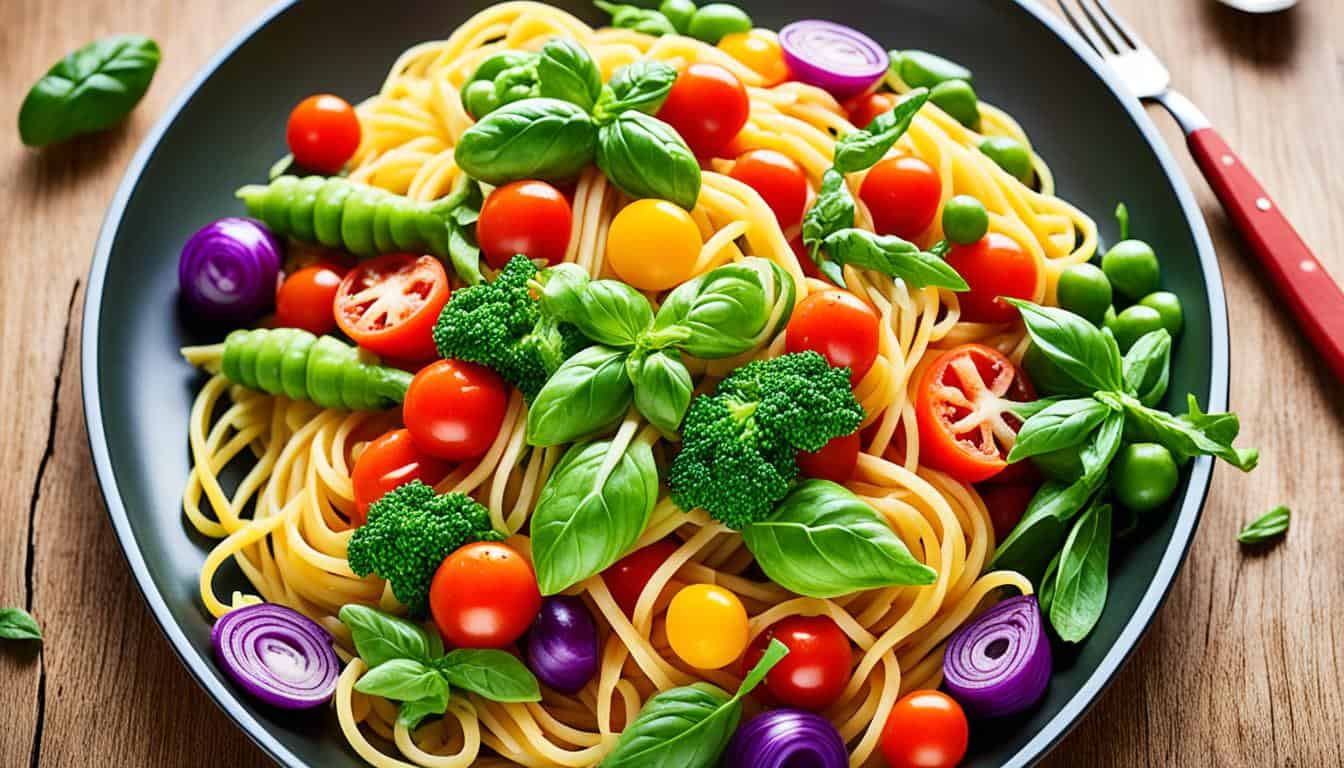
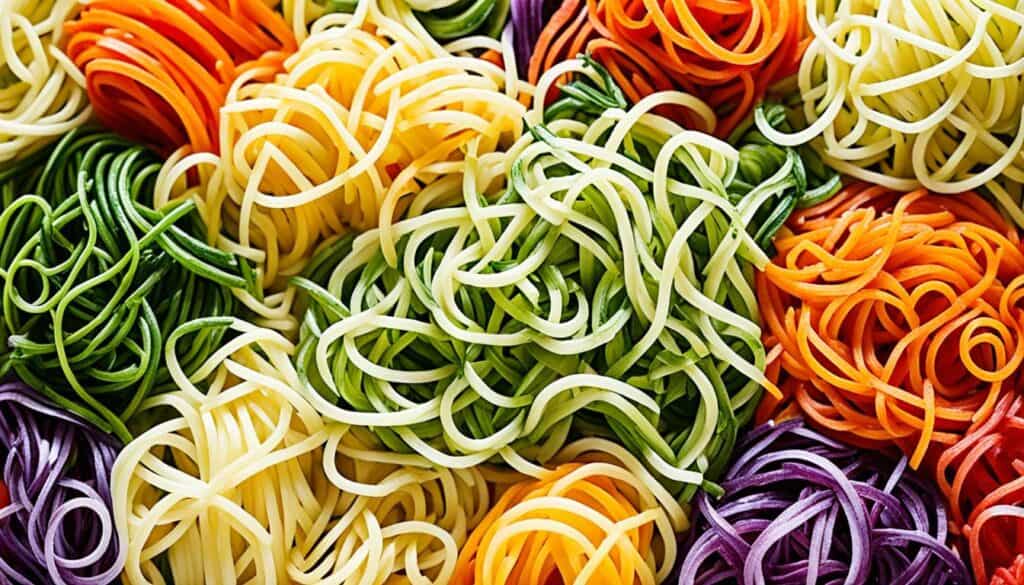
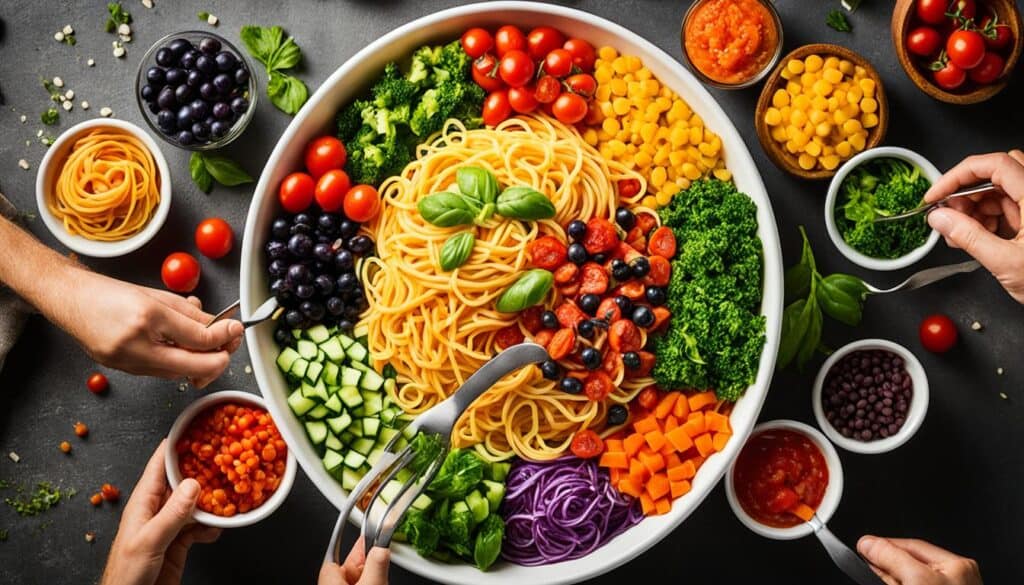
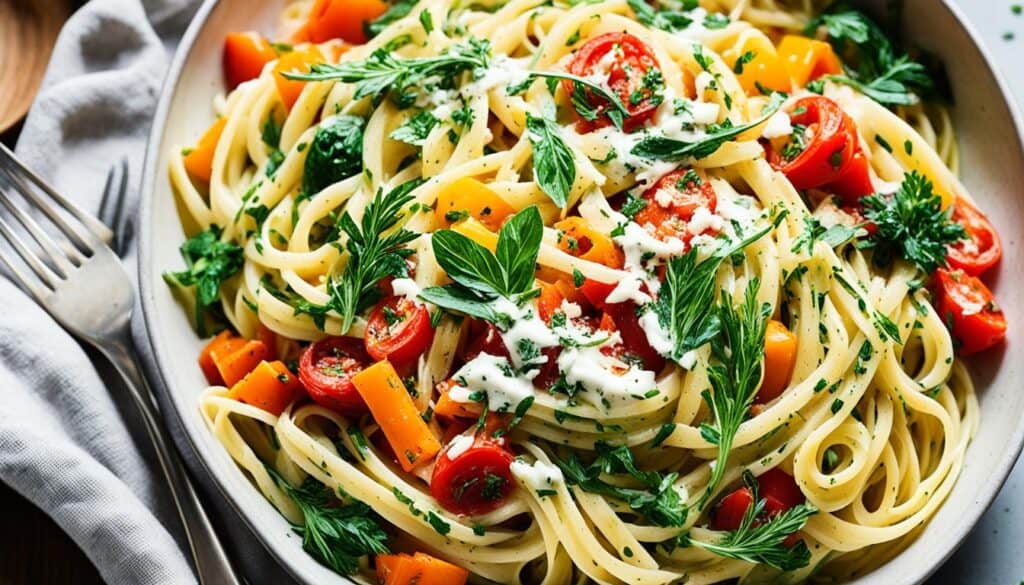
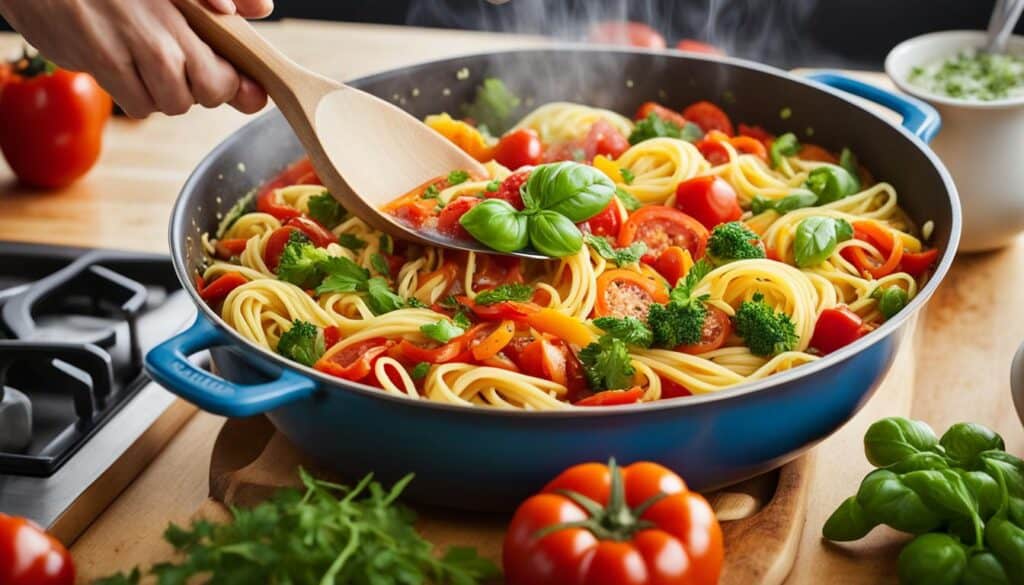

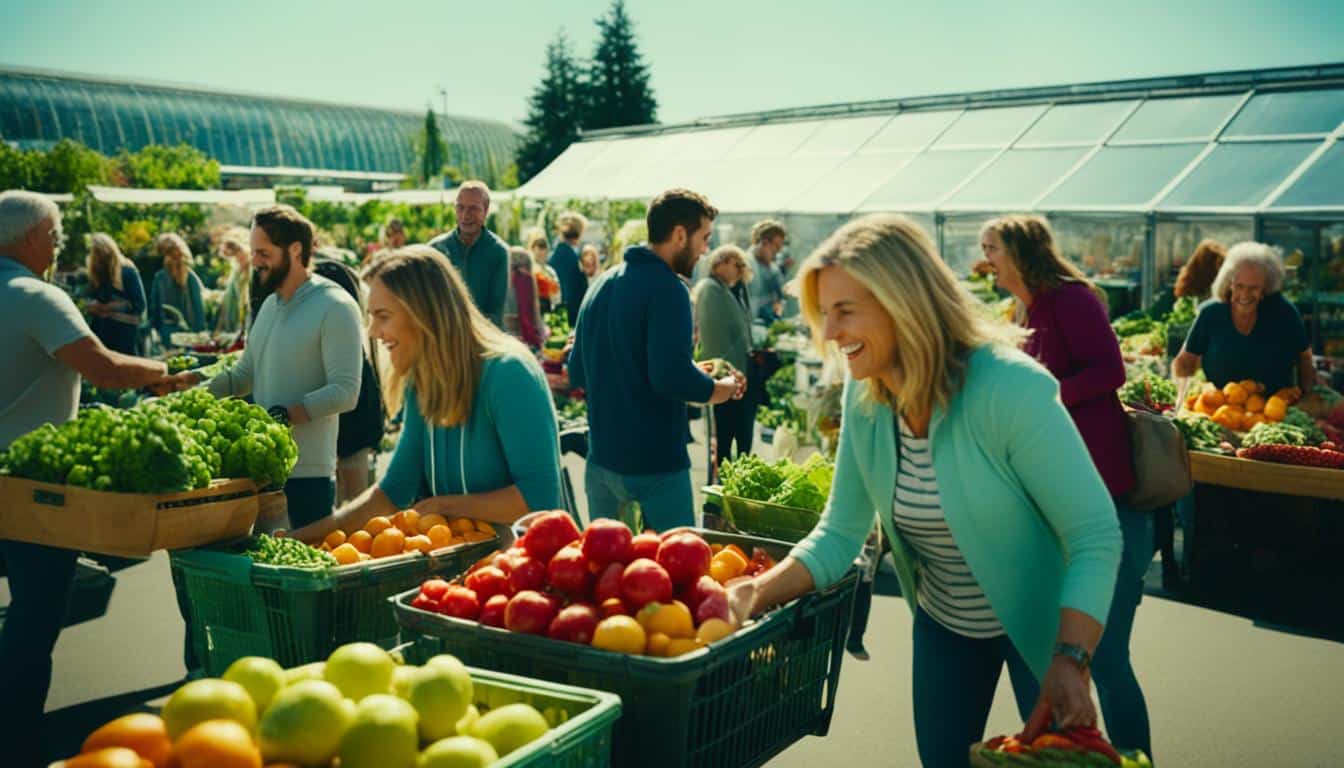
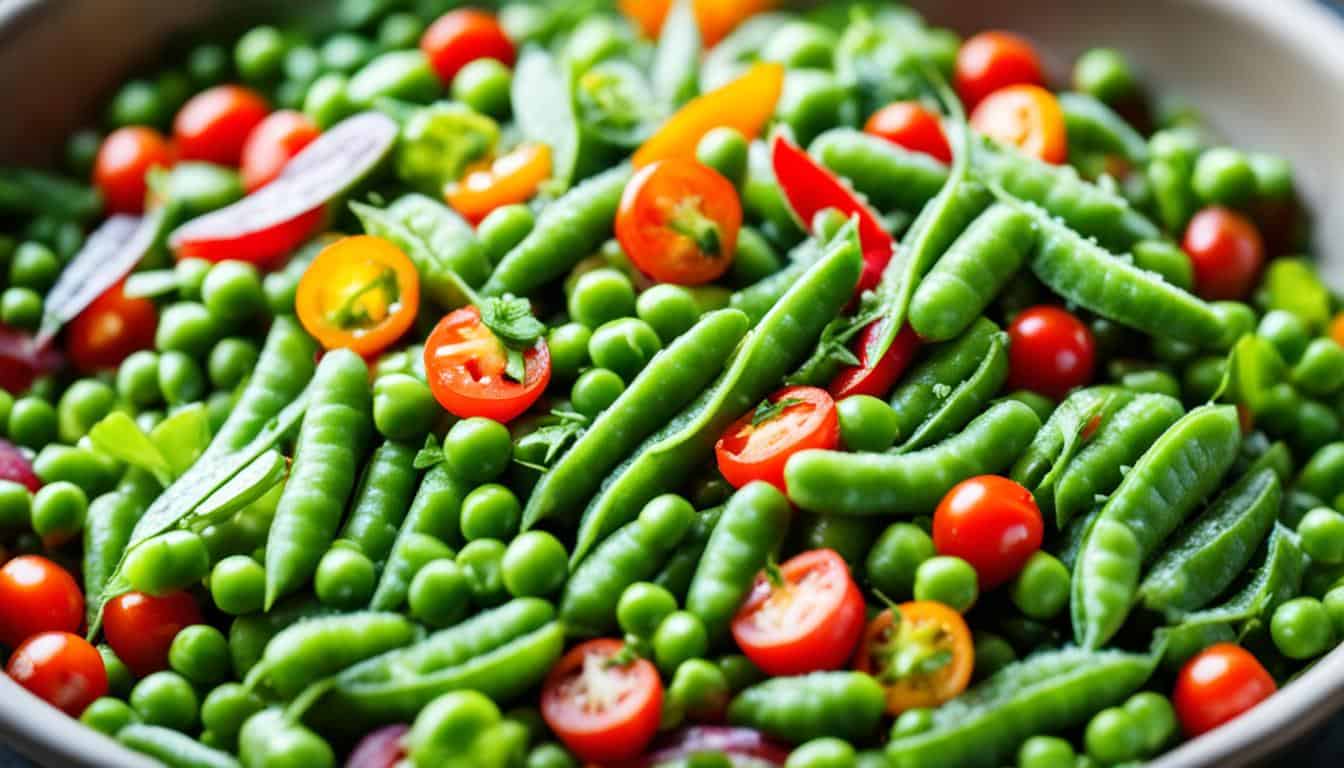
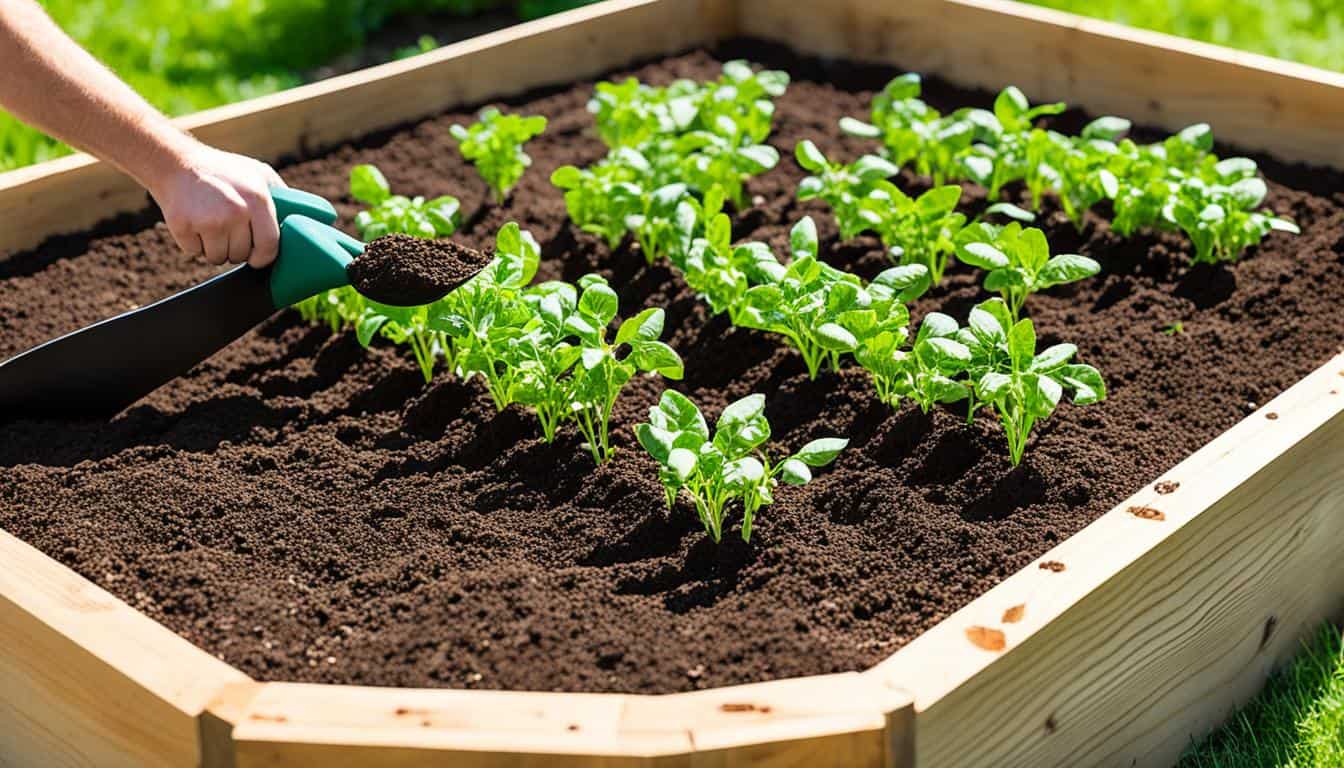
Leave a Reply